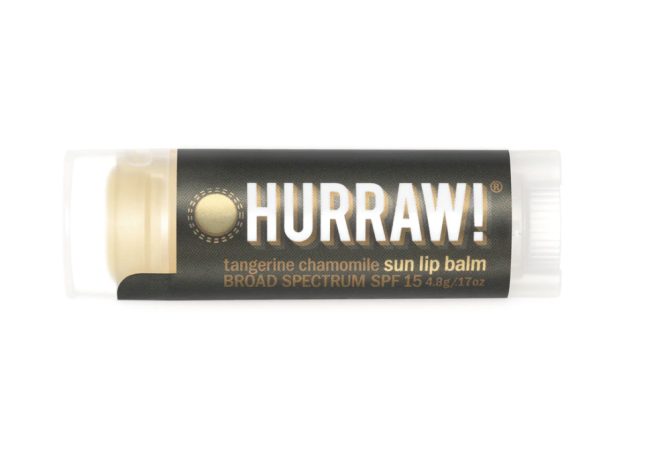Dirt, oil, bacteria…there are loads of nasties hiding in your make-up brushes! Jemma Patton reveals why it’s so important to wash them regularly
Let’s be honest, how often do we really wash our make-up brushes? The truth is that while most of us cleanse our skin twice a day, we happily apply make-up using dirty tools.
To shock us into better habits, Beauty Pie has commissioned a series of macro photographs (that’s super magnified photography) to show us just how filthy the average beauty tool is. The images show in vivid detail the dirt, grime and grease that builds up on brushes, blenders, and face cloths—all things we use daily on our freshly cleansed skin. Be warned: these photos are pretty grim!
As well as the obvious ick factor, unwashed beauty tools are a breeding ground for bacteria, which can lead to break outs, irritated skin, eye infections, and other unpleasant conditions.
Alongside the photography, Beauty Pie interviewed 1,000 people to find out how often they clean their beauty tools. The results are truly shocking, with one in six people interviewed admitting to never washing their make-up tools.
“The macro photography clearly shows just how dirty these everyday tools are”
The survey shows that over half of beauty blenders have never been washed, and 45 per cent of participants admitting to never cleaning their foundation brush. The macro photography clearly shows just how dirty these everyday tools are, with embedded stains on beauty blenders, and dirt and oil encrusted into the bristles of brushes.
Regular image of a beauty blender. Image: Beauty Pie

Macro image of a beauty blender, revealing stains and bacteria. Image: Beauty Pie
Many of us use a headband to keep hair out of the way we cleanse, but unless regularly washed, it will have hair and dirt embedded in the fabric—inexcusable really, when it can be thrown in the wash with towels!
Even bottles of skincare are covered in dirt and bacteria. They may look clean to the naked eye, but the macro photography shows a layer of grease, which we then touch as we apply products.
The top offenders are:
- Fake tan mitts, with 68 per cent of users admitting that they never wash it between applications
- Skincare headbands, with 63 per cent of people confessing to never washing their headband
- Eyelash curlers, with 55 per cent admitting to never cleaning them
- Beauty Blenders, a massive 53 per cent of people have never washed their blender
- Foundation brush, incredibly not washed by 45 per cent of people
- Eye shadow brush, with 43 per cent saying they never cleaned their eyeshadow brush

Regular image of a skincare headband. Image: Beauty Pie

Macro image of a skincare headband, revealing dirt and hairs. Image: Beauty Pie
Beauty Pie worked with Dr Joe Latimer, a professional microbiologist and lecturer in antimicrobial resistance from the University of Salford, to uncover how the use of dirty beauty tools can affect your skin.
“Our skin is an ecosystem with a myriad of bacteria, fungi and viruses living together”
Dr Latimer commented: “Our skin is an ecosystem with a myriad of bacteria, fungi and viruses living together, and most of the time, our skin keeps the balance of these bacterial species in check. Our bacteria help to keep our skin healthy and protect us from infection, but if numbers become too high, we can end up with problems like acne, atopic dermatitis, seborrheic dermatitis, or wound infections.”
He continued: “Every time we touch our skin with beauty tools like make-up brushes, facecloths, or facial rollers, we transfer some of our bacteria onto the tools. Over time, bacteria, dead skin tissue and old skincare and make-up product will build up on tools and this will allow bacteria to multiply. So, when we use the tools again, we transfer many thousands of these microbes back onto our skin. To make it worse, bacteria love warmth and moisture. This means that if we store our cloths and brushes in a damp environment, more bacteria will grow.”
So, what does Dr Latimer recommend? The answer is simple. “To stop bacteria from building up to potentially unhealthy levels, we need to remove their food, water, and heat so they can’t grow. Regularly cleaning skincare and make-up tools and, crucially, storing them somewhere nice and dry is the best way to do this. That way, you can restore the happy balance between you and your bacteria without risking any annoying spots or rashes.”
“Try to wash your brushes weekly, using warm water and a mild soap”
Keeping our make-up brushes and beauty tools clean and hygienic needn’t be a huge chore. Try to wash your brushes weekly, using warm water and a mild soap or shampoo – baby shampoo works really well. Well maintained brushes will last a long time, but beauty blenders and other make-up sponges need replacing more often as they’re impossible to wash thoroughly, wash weekly and change every few months. For the truly lazy, try a brush cleansing spray; Clinique and Boots No7 both have good options.

Regular image of a foundation brush. Image: Beauty Pie

Macro image of a foundation brush, revealing bacteria and grease. Image: Beauty Pie
Face clothes should be washed every time they’re used, so have a good supply and get into the habit of throwing them into the laundry daily. Facial rollers should be washed with warm water and soap after each use.
Finally, don’t forget make-up bags. The fabric of your make-up bag will get grubby from contact with your brushes and products, and although it’s not coming into direct contact with your skin, it could still be transferring bacteria. There’s no point in cleaning your brushes and then popping them in a dirty bag. Washing advice will vary, so follow the instructions on the label.
Created with Censuswide—polling 1,047 skincare users in the UK—aged 16 and over. All data correct July 2023.
Keep up with the top stories from Reader’s Digest by subscribing to our weekly newsletter








